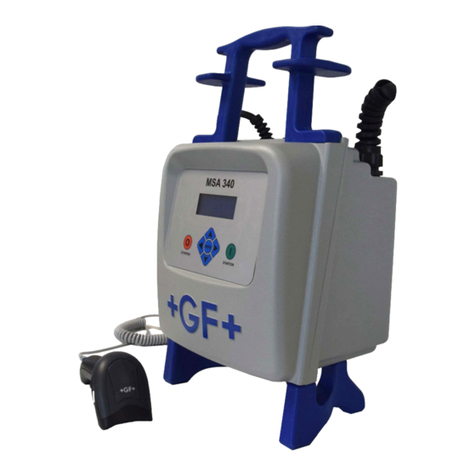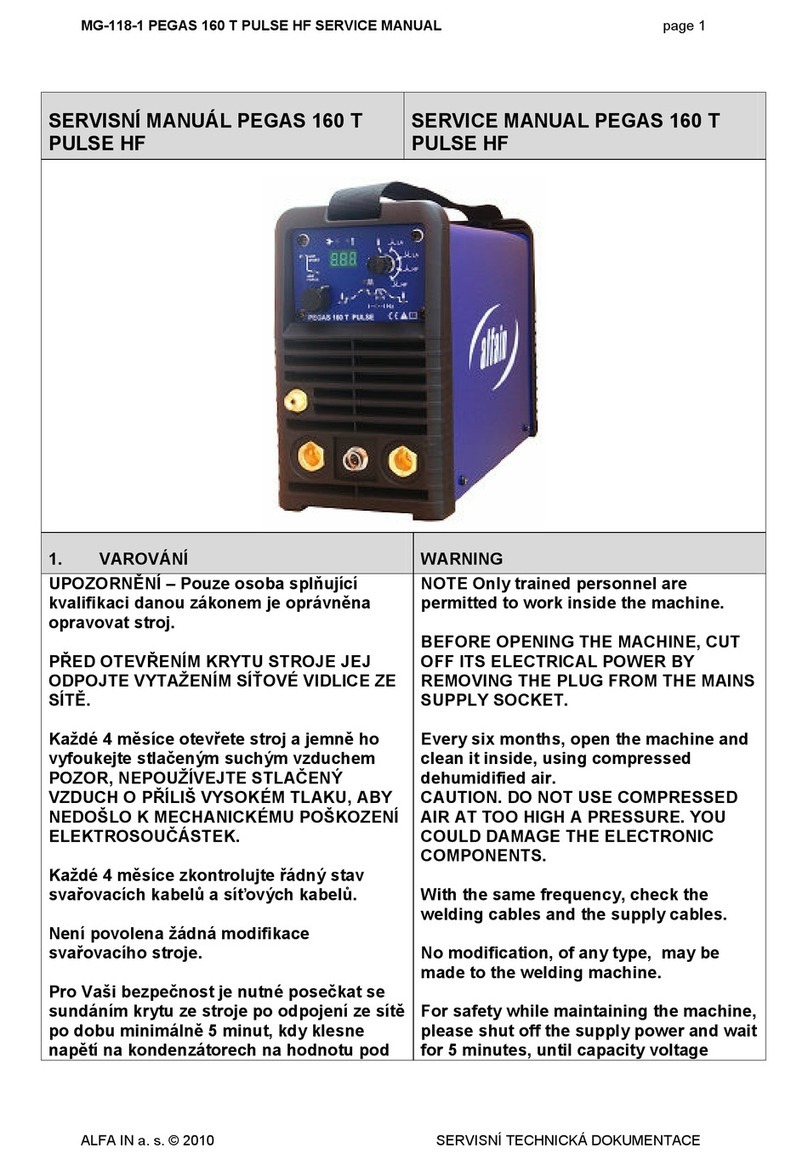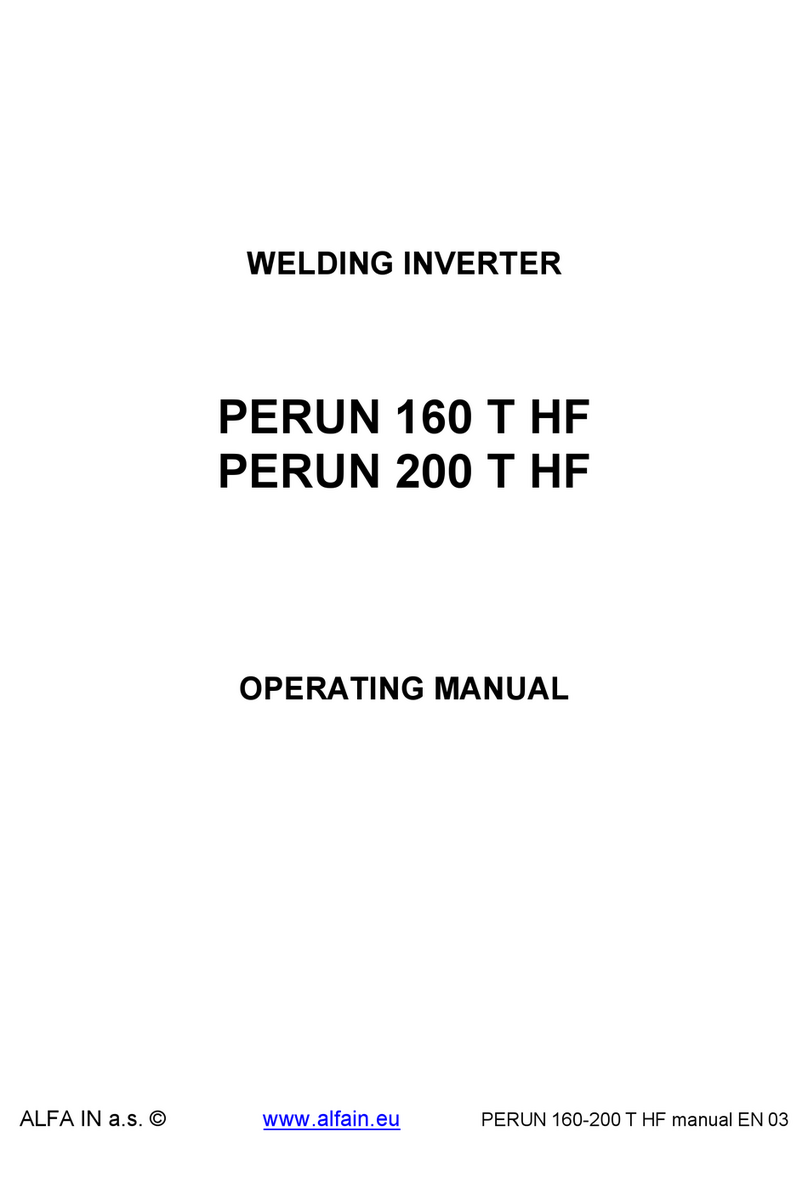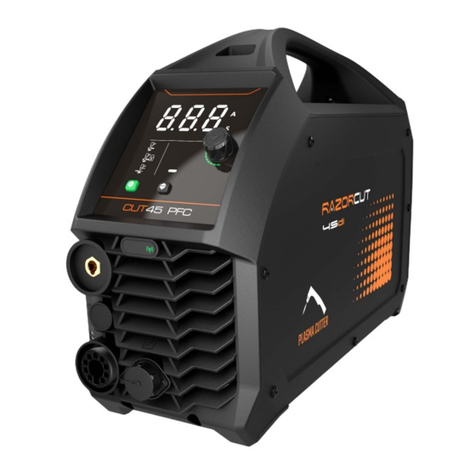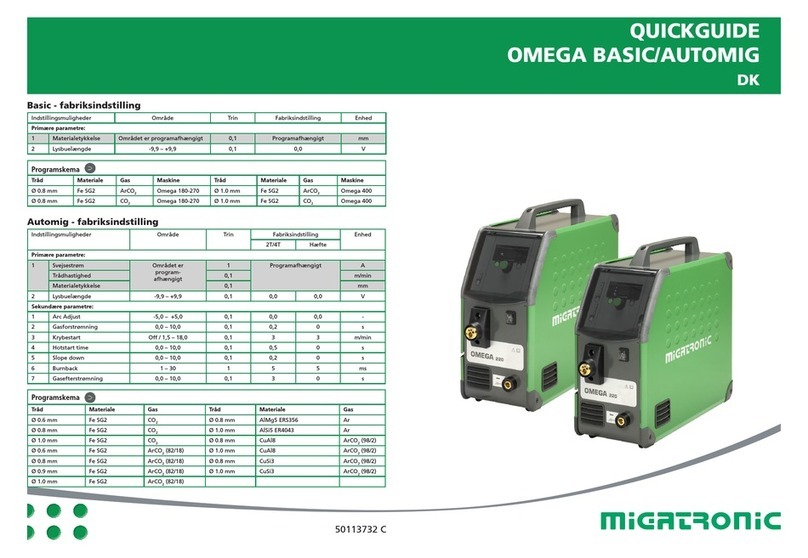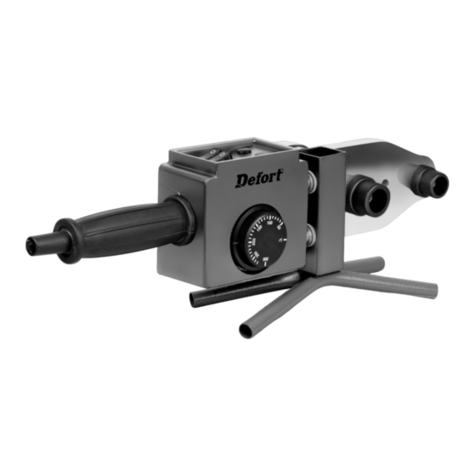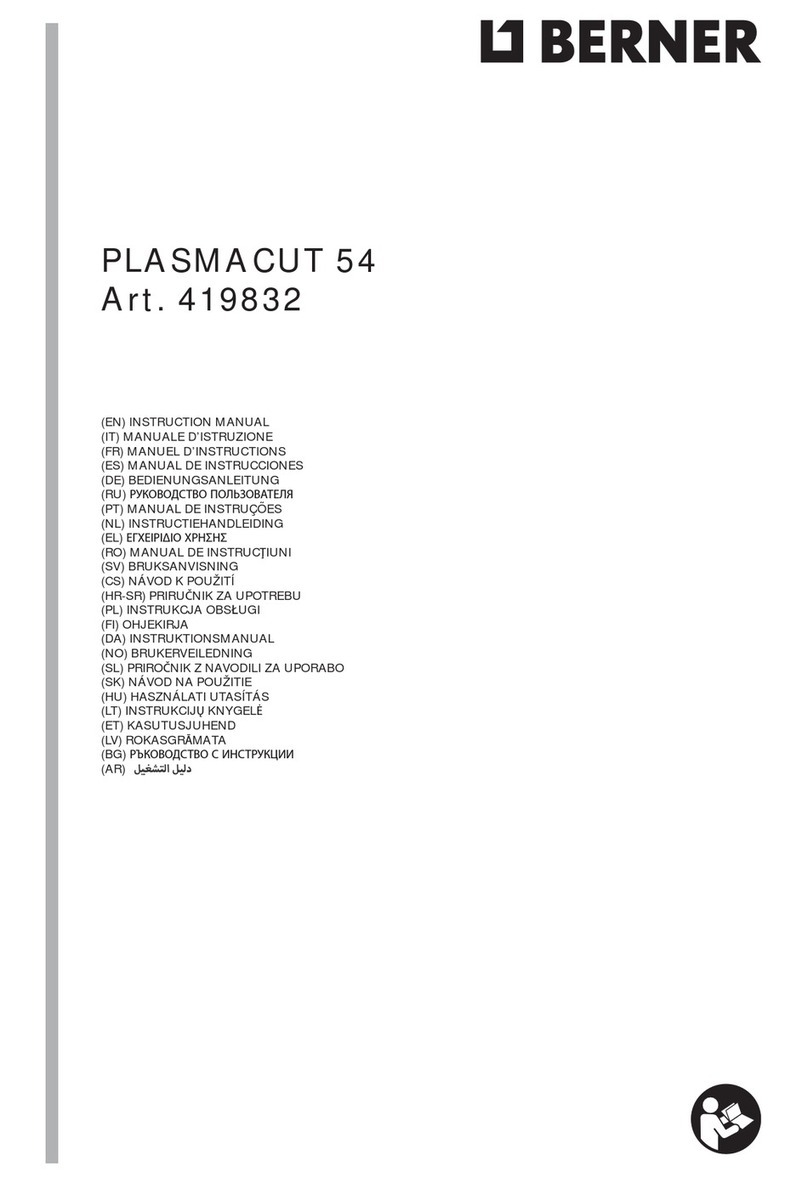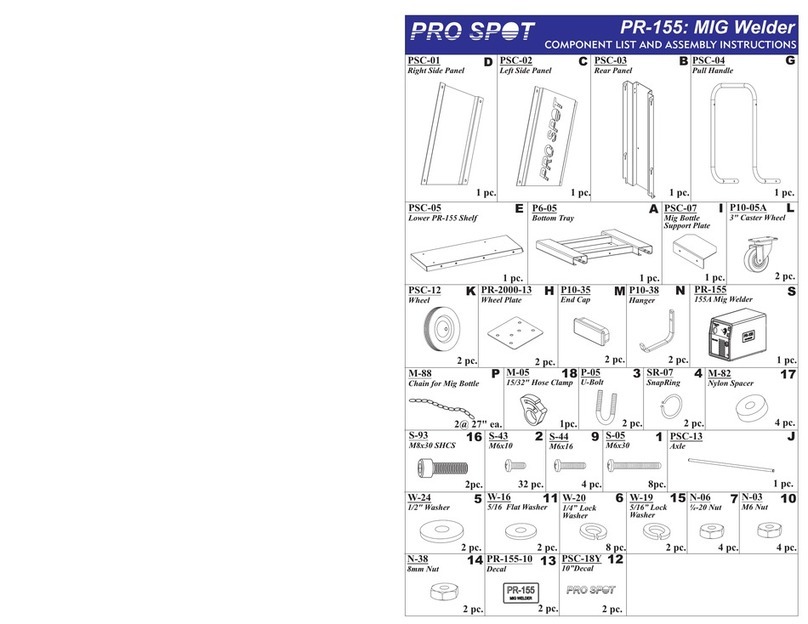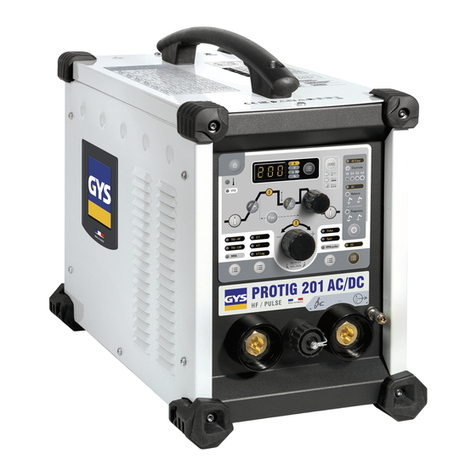
5/22
ALFA IN a.s. © www.alfain.eu
3 OPERATING CONTROLS
. Putting the machine into operation can be performed only by trained
personnel and only within the technical provisions. The manufacturer is not
liable for damages resulting from improper use or handling.
For maintenance and repair, use only original spare parts from ALFA IN.
2. Device complies with IEC 6 000-3- 2.
3. The welding machine is tested according to the degree of protection
IP 23S, which provides protection against the intrusion of solid bodies with
a diameter greater than 2 mm and protection against ingress of water,
falling on the machine in a vertical direction or max degree of 60°.
4. Working ambient temperature between - 0 and +40 °C.
5. Relative humidity below 90% at +20 °C.
6. Up to 3000 m altitude.
7. The machine must be positioned so that cooling air can enter and leave
through cooling vents with no problem. It is necessary to ensure that there
are no mechanical equipment, especially metal particles (e.g. during
grinding) drawn into the machine.
8. It is necessary for welding machine to undergo a periodic inspection every
6/ 2 months by an authorized officer according to CSN 33 500 and CSN
050630 – see Maintenance and service tests.
9. All interventions in the el. equipment as well as repair (removal of the plug,
fuse replacement) should be performed by an authorized person.
0. With competent mains voltage and input must match the plug.
Caution E tension cables must not have conductors with a smaller
cross section than 3 2,5 mm2. The machine can be operated on a single-
phase electric generator 10 kVA (1 230V/50Hz) and more, which has
ensured voltage stabilization ± 10%. Generators with lower power can
damage the machine.
. It is necessary to protect the machine against:
a. Moisture and rain
b. Chemically aggressive environments
c. Mechanical damage
d. Draft and possibly ventilation of neighboring machines
e. Excessive overloading – exceeding tech. parameters
f. Rough treatment
ELECTROMAGNETIC COMPATIBILITY
The welding device is in terms of interference designed primarily for industrial
areas. It meets the requirements of EN 60974- 0 class A and it isn’t designed
for using in residential areas, where the electrical energy is supplied by public
low-voltage power supply network. It can be here potential problems with
ensuring of electromagnetic compatibility in this areas, due to interference
caused by power lines as well as the radiated interference.
During operation, the device may be the source of interference.

